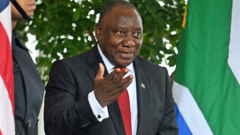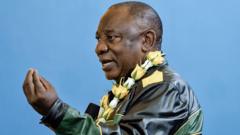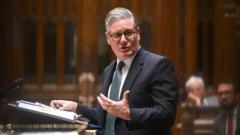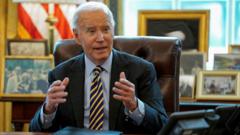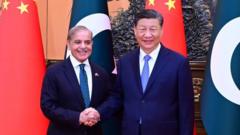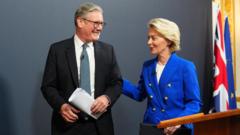In a detailed look, we explore how the Trump administration determined the tariffs imposed on imports and the economic rationale behind them.
**Understanding the Mathematics Behind Trump's Tariffs**
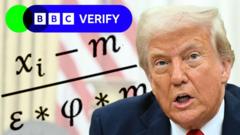
**Understanding the Mathematics Behind Trump's Tariffs**
The White House's tariff calculations and their intended economic impact are scrutinized.
US President Donald Trump has introduced a 10% tariff on goods coming from numerous countries, with even steeper rates for what he deems the "worst offenders." This move has raised questions regarding how precisely these tariffs, which effectively act as taxes on imports, were calculated. BBC Verify delves into the intricacies of these calculations to shed light on the methodology employed.
When the President unveiled a large cardboard chart illustrating these tariffs in the White House Rose Garden, it was originally thought that the computations were based on a mixture of existing tariffs and trade barriers—like regulations that affect trade. However, following this announcement, the White House disclosed a mathematical formula that appears quite complex on the surface.
Despite its appearance, the underlying math is straightforward: it involves taking the trade deficit in goods between the US and the specific country, dividing that figure by the country's total goods imports, and then dividing the result by two. A trade deficit arises when a country's imports (purchases from other nations) exceed its exports (sales to other nations).
For instance, the US has a significant goods deficit with China, amounting to $295 billion, against total imports of $440 billion from the country. By dividing $295 billion by $440 billion, one arrives at roughly 67%. When divided again by two and rounded, the resultant tariff imposed on China sits at 34%. The same formula yields a 20% tariff on the European Union.
Many analysts have observed that Trump's tariff structure lacks reciprocity. Reciprocal tariffs would imply they are based on current tariffs that other countries impose on US imports, along with non-tariff barriers affecting trade costs. However, the White House's official documents reveal that this was not considered for all nations subjected to the tariffs. Instead, the rates were primarily aimed at diminishing the goods trade deficit with each target country.
Unconventionally, tariffs were also placed on countries such as the UK, where the US does not maintain a goods trade deficit. Currently, over 100 countries fall under this new tariff regime.
Trump maintains that the US is facing an unfair global trade scenario, claiming other countries are inundating American markets with inexpensively produced goods, adversely affecting US industries and employment rates. He argues that foreign nations impose barriers which hinder US products’ competitiveness abroad. Consequently, Trump's objective is to utilize tariffs as a tool to eliminate trade deficits, rejuvenate US manufacturing, and protect American jobs.
Nevertheless, it remains uncertain if this extensive tariff system will yield the anticipated benefits. Economists consulted by BBC Verify express skepticism, suggesting that while the tariffs might indeed shrink the trade deficit between the US and specific countries, they are unlikely to address the larger deficit with the world at large.
Professor Jonathan Portes of King’s College, London, posits that while bilateral trade deficits may decrease, many broader effects remain unquantified in these calculations. The existing overall trade deficit is not merely a factor of tariffs but rather a reflection of the American economy's behavior. Many Americans tend to spend and invest more than they earn, thus driving a consumption gap that leads to more imports than exports. As long as these economic patterns persist, it is expected that the US will continue to experience a trade deficit, despite imposing higher tariffs on international trade partners.
Thomas Sampson from the London School of Economics critiques the tariff strategy further, asserting that the formula used to rationalize these tariffs lacks a sound economic basis, potentially leading to global economic repercussions.



